The Basics of Icelandic Driving Rules
Embarking on a journey through Iceland's breathtaking landscapes is an experience like no other. However, to ensure a safe and smooth journey, it's essential to familiarize yourself with the basic driving rules of the country. Here's a primer to get you started:
Right-Hand Driving
- In Iceland, vehicles drive on the right side of the road. If you're from a country where driving is on the left, this might take some getting used to. Always remember to stay on the right, especially when turning at intersections or entering roundabouts.
Speed Limits
- The general speed limit in urban areas is 50 km/h.
- In rural areas, on gravel roads, it's typically 80 km/h.
- On paved highways and the main ring road, the limit is 90 km/h.
- Always adjust your speed according to road conditions, especially in adverse weather.
Seat Belts and Safety
- Seat belts are mandatory for all passengers, both in the front and back seats. This rule is strictly enforced, and for a good reason – seat belts save lives.
- Children must either use a car seat or a booster seat, depending on their age and size.
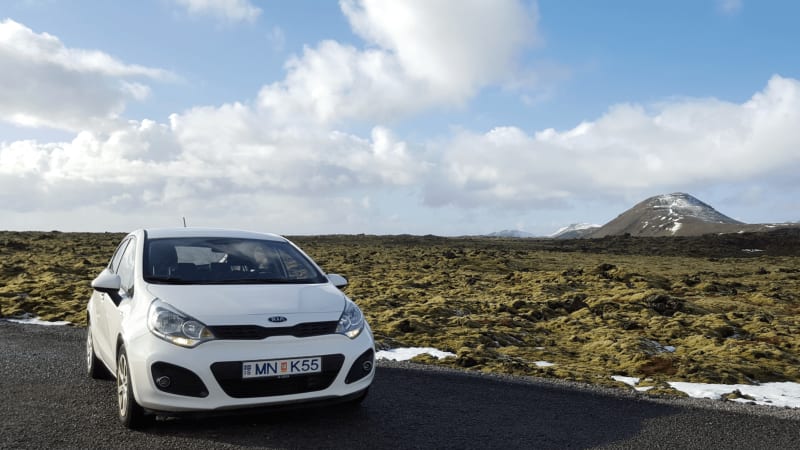
Alcohol and Driving
- The legal blood alcohol limit in Iceland is very low, at 0.05%. However, the safest rule is zero tolerance. If you plan to drink, don't drive.
Headlights On At All Times
- Due to the country's unique lighting conditions, especially during winter and the midnight sun in summer, it's a legal requirement to have your headlights on at all times, day or night.
Roundabouts
- Vehicles inside the roundabout have the right of way. However, be aware that this wasn't always the rule, and some local drivers might still operate under the old system, where those entering had the right of way. Always approach roundabouts with caution.
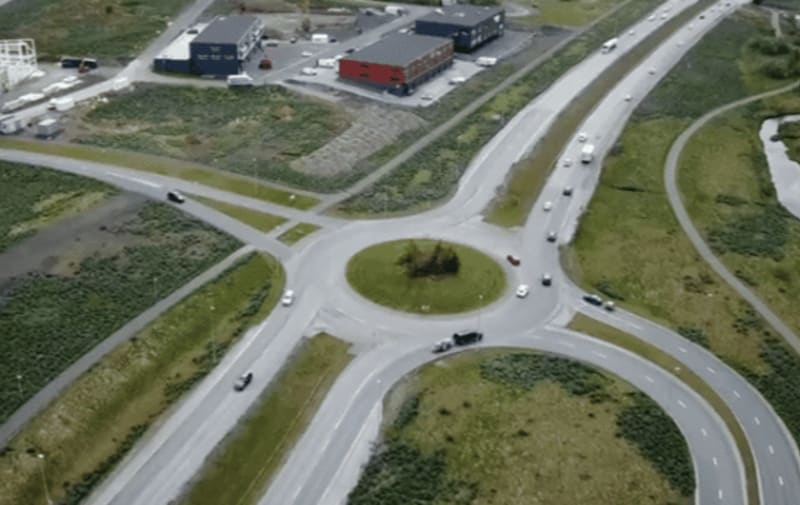
- Gas stations can be few and far between in remote areas of Iceland. It's a good practice to fill up your tank whenever possible, especially before embarking on long stretches of road in the countryside.
Parking in Reykjavik and Other Towns
- In most towns, especially Reykjavik, parking zones are marked by different colors, each corresponding to a specific fee. Always check the signs and pay accordingly to avoid fines.
Driving in Iceland offers the chance to witness some of the world's most stunning natural wonders. By adhering to these basic rules, you ensure a safe and memorable journey across this land of fire and ice.
Navigating Single Lane Bridges and Tunnels
Iceland's unique terrain and infrastructure present some driving scenarios that might be unfamiliar to many international travelers. Among these are single lane bridges and tunnels. Understanding how to navigate these structures is crucial for a safe journey.
Single Lane Bridges
-
Anticipate and Slow Down: As you approach a single lane bridge, reduce your speed and check for oncoming traffic.
-
Right of Way: The general rule is that the car closer to the bridge has the right of way. However, if a larger vehicle or a convoy is approaching, it's courteous to let them pass first.
-
Use Pullouts: Some bridges have small pullouts. If you see an oncoming car and you're not close to the bridge, it's a good practice to wait in the pullout.
-
Cross with Caution: Once you're sure it's your turn, cross the bridge steadily without stopping.
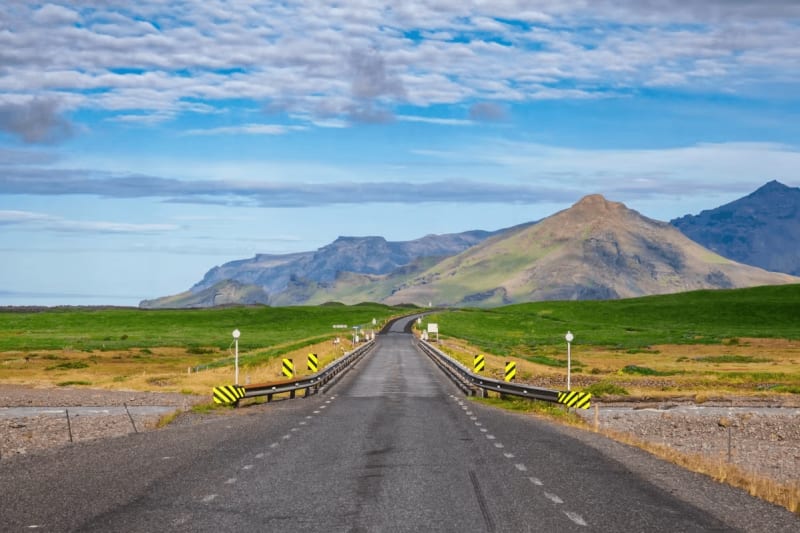
-
Stay in Your Lane: Some tunnels have two lanes, but others might be single lane. For single lane tunnels, there are pullouts at intervals where you can wait for oncoming traffic to pass.
-
Right of Way in Tunnels: If you're closer to a pullout and see oncoming traffic, it's courteous to use the pullout and let the other vehicle pass.
-
Tunnel Fees: While most tunnels in Iceland are free, there are a few, like the Vaðlaheiðargöng tunnel, that have a toll. Be prepared to pay online within 24 hours of passing through.
General Tips
-
Stay Calm: Especially if you're not used to such structures, it's essential to stay calm. Take your time, and don't feel rushed.
-
Follow Signage: Always pay attention to road signs. They'll give you a heads up about upcoming bridges or tunnels and provide guidance on how to navigate them.
-
Consider Other Drivers: Icelandic drivers are used to these conditions. If you're unsure, it's okay to follow the lead of local drivers while ensuring you're driving safely.
Gravel Roads and Changing Conditions
Iceland's diverse landscapes mean that drivers will encounter a variety of road types. Gravel roads are common, especially in the more remote parts of the country. Being prepared for these and understanding how to navigate changing conditions is essential for a safe trip.
Gravel Roads
-
Reduce Speed: Gravel roads can certainly be unpredictable. Reducing your speed gives you better control of the vehicle and reduces the risk of skidding.
-
Beware of Loose Stones: Gravel can get thrown up by the tires, potentially damaging the car or other vehicles. Keeping a safe distance from other cars can help reduce this risk.
-
Steer Steadily: Avoid sudden steering maneuvers. If you feel the car skidding, it's usually best to steer into the skid and reduce speed gently, rather than braking suddenly.
-
Transitioning from Asphalt to Gravel: This can be a tricky spot, as the change in traction can be surprising. Slow down before the transition and adjust your driving accordingly.

Changing Weather Conditions
-
Stay Updated: Icelandic weather can change rapidly. Regularly check weather updates, especially if you're heading into more remote areas.
-
Prepare for Wind: Iceland can be windy, and sudden gusts can surprise drivers, especially those in higher vehicles or campervans. Reduce speed during high winds and keep a firm grip on the steering wheel.
-
Winter Conditions: Snow and ice can make roads slippery. If you're traveling in winter, ensure your vehicle is equipped with winter tires. Drive slowly, increase your following distance, and be cautious on bends.
-
River Crossings: Some of the more remote areas might require river crossings. Always assess the depth and current before crossing. If unsure, it's better to wait and watch another vehicle cross or turn back.
General Tips
-
Stay Informed: Information centers, local residents, and other travelers can provide valuable insights into current road conditions.
-
Respect Road Closures: If a road is closed, it's for a good reason. Never bypass road closures.
-
Drive to the Conditions: This is the golden rule. Whether it's rain, wind, gravel, or any other condition, adjust your driving to suit the environment.
Sheep and Wildlife on the Road
One of the unique aspects of driving in Iceland is the possibility of encountering sheep and other wildlife on the road. These encounters can be charming, but they also require caution and respect for the animals' safety and well-being.
Sheep on the Move
-
Always Expect Sheep: Especially in rural areas, always be on the lookout for sheep. They can often be seen grazing near the road and might decide to cross without warning.
-
Spring and Autumn Migrations: During these seasons, sheep are moved between pastures. This means a higher likelihood of encountering them on the road.
-
Slow Down and Wait: If sheep are on the road, reduce your speed and wait for them to move. Honking can help, but it's essential to be patient and give them space.

Other Wildlife Encounters
-
Birds in the Road: Iceland is home to various bird species, some of which might be found on the road, especially in coastal areas. Slow down if you see birds ahead and give them time to fly away.
-
Reindeer in the East: In East Iceland, you might encounter reindeer. These animals are large and can cause significant damage if hit. Always reduce speed when you see them and wait for them to move away from the road.
Safety First
-
Avoid Sudden Swerves: If an animal suddenly appears in front of you, brake calmly and avoid swerving, which can lead to loss of control or accidents.
-
Night Driving: Animals can be harder to spot at night. If you're driving in the dark, reduce your speed and use high beams when there's no oncoming traffic.
-
Report Injured Animals: If you come across an injured animal, or if an accident occurs, report it to local authorities or farmers if possible. It's a matter of responsibility and respect.
Appreciating the Experience
-
Capture the Moment: If it's safe to do so, and you're not obstructing traffic, take a moment to capture photos of your wildlife encounters. It's a unique aspect of the Icelandic driving experience.
-
Respect and Enjoy: These encounters are a reminder of Iceland's rich natural heritage. Enjoy the experience, but always prioritize safety and respect for the animals.
Navigating roads shared with sheep and wildlife is a quintessential Icelandic experience. With a bit of caution and a lot of appreciation, these encounters can become cherished memories from your journey.
No Off-Roading
Iceland's pristine landscapes are a major draw for visitors. However, it's crucial to remember that these environments are delicate and can be easily damaged. One of the most significant threats to Iceland's nature is off-roading, which is not only harmful but also illegal.
Why Off-Roading is Harmful
-
Delicate Vegetation: The vegetation in Iceland takes a long time to grow due to the harsh climate. Driving off-road can destroy plants that have taken decades or even centuries to establish.
-
Soil Erosion: Tires can disrupt the topsoil, leading to erosion. This not only damages the landscape but can also have broader environmental impacts.
-
Disturbance to Wildlife: Off-roading can disturb local wildlife, affecting their natural behaviors and potentially harming them.
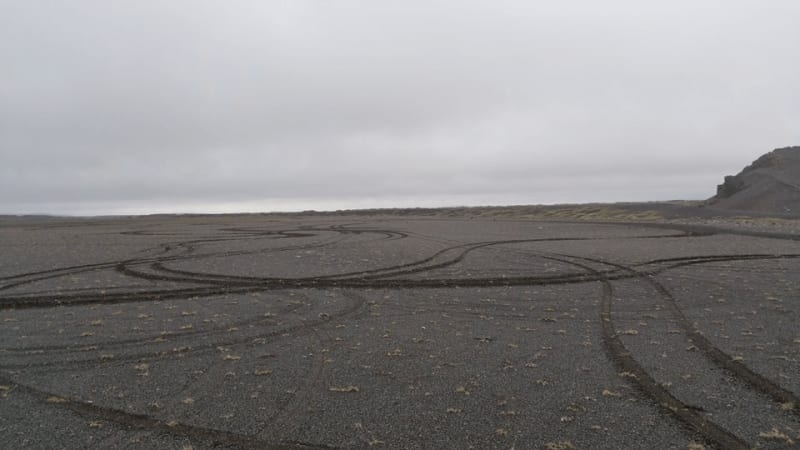
- Roads and Marked Trails Only: Always stick to marked roads and trails. If it's not a designated path, don't drive on it.
Environmental Responsibility
-
Leave No Trace: The "leave no trace" principle is vital in Iceland. Always ensure you're not leaving any lasting impact on the environment.
-
Stay Informed: Before heading out, familiarize yourself with the areas where you plan to drive. Know which areas are particularly sensitive and avoid them.
-
Report Off-Roading: If you see someone else off-roading, consider reporting it to local authorities. It's a collective responsibility to protect Iceland's natural beauty.
Alternative Adventures
-
Guided Tours: If you're keen to explore off the beaten path, consider joining a guided tour. Many companies offer excursions that allow you to experience Iceland's wild side without harming the environment.
-
Hiking: Instead of driving, why not explore on foot? There are countless hiking trails in Iceland that offer breathtaking views and intimate encounters with nature.
In conclusion, while the allure of venturing off-road in Iceland might be tempting, the environmental and legal consequences are significant. By respecting the rules and staying on designated paths, you can ensure that Iceland remains beautiful for generations to come.
Overtaking and Signaling
Driving in Iceland offers breathtaking views, but it also comes with its own set of challenges, especially for those unfamiliar with the roads. One of the essential aspects of safe driving is understanding the rules and etiquette around overtaking and signaling.
When to Overtake
-
Clear Visibility Ahead: Only overtake when you have a clear view of the road ahead. Mountainous terrains and winding roads can often obscure oncoming traffic.
-
No Solid Lines: In Iceland, a solid white line in the middle of the road indicates that overtaking is prohibited. Only overtake when the line is broken.
-
Safe Distance: Ensure there's enough distance for you to overtake and return to your lane without forcing the other vehicle to slow down.
How to Signal
-
Use Indicators: Always use your indicators well in advance to signal your intention to overtake. This gives other drivers ample time to anticipate your move and act accordingly.
-
Flashing Headlights: In some cases, especially during low visibility conditions, you might see drivers flashing their headlights. This can be a signal that it's safe to overtake or a warning of an upcoming hazard.
Overtaking Etiquette
-
Don't Tailgate: If you're looking to overtake, avoid tailgating the vehicle in front. Maintain a safe distance and wait for a safe opportunity to pass.
-
Acknowledge Courteous Drivers: If a vehicle ahead slows down and signals for you to overtake, it's polite to acknowledge them with a quick wave or flash of your hazard lights once you've safely passed.
-
Be Patient: If you're unsure about overtaking, it's always better to wait. A few extra minutes won't make much difference to your journey, but it can ensure your safety.
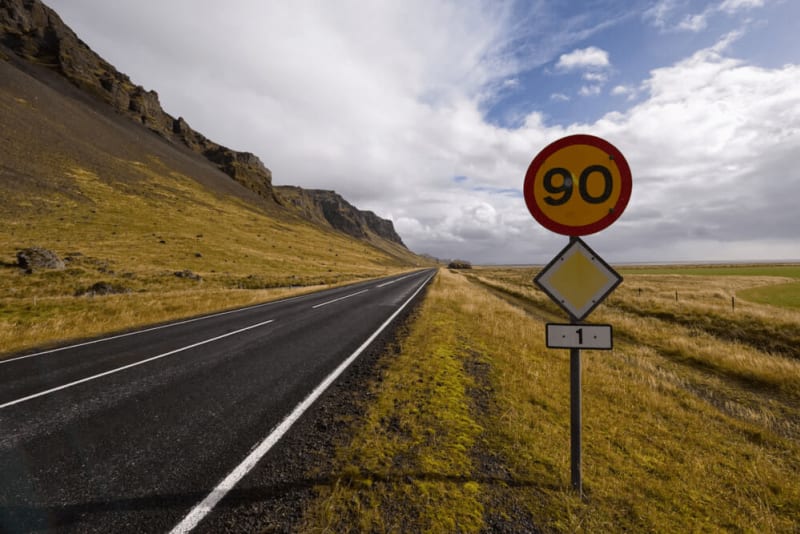
- End of Overtaking Zone: Similarly, there will be signs indicating the end of an overtaking zone. Ensure you've completed your maneuver before reaching this point.
In conclusion, overtaking in Iceland requires careful judgment and understanding of local driving etiquette. By being patient, signaling intentions clearly, and adhering to road signs, you can ensure a safe and enjoyable driving experience in the land of fire and ice.
Handling Adverse Weather Conditions
Iceland's unpredictable weather can pose challenges for even the most seasoned drivers. From sudden snowstorms to gusty winds, it's essential to be prepared and know how to navigate safely through various weather conditions.
Driving in Snow and Ice
-
Reduce Speed: Always lower your speed in snowy or icy conditions. The road's grip can be significantly reduced, increasing the risk of skidding.
-
Use Snow Chains: If you're traveling during winter, it's a good idea to have snow chains in your vehicle. They can provide additional traction on snow-covered roads.
-
Avoid Sudden Movements: Make sure to brake, accelerate, and steer gently. Sudden movements can cause the car to skid.
Navigating in Fog
-
Use Fog Lights: Turn on your fog lights or low beams to increase visibility. Avoid using high beams as they can reflect off the fog and reduce visibility.
-
Follow Road Markings: If the fog is dense, use the road's side markings as a guide. Keep a safe distance from the vehicle in front.
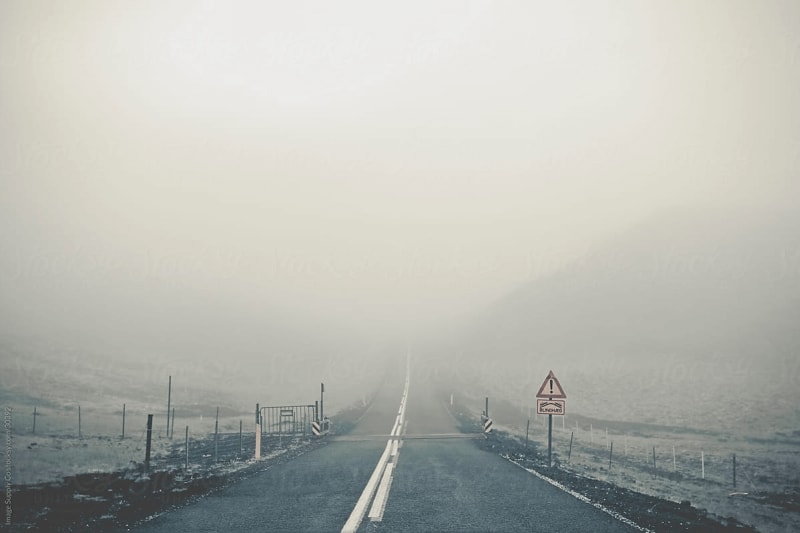
Dealing with Strong Winds
-
Two Hands on the Wheel: Strong gusts can push your vehicle off course. Keep both hands on the steering wheel, especially when driving near cliffs or open areas.
-
Beware of Opening Doors: When parking or stopping, be cautious when opening doors. Strong winds can catch them, causing damage or injury.
Rain and Wet Roads
-
Increase Following Distance: Wet roads can double the stopping distance. Keep a more significant gap between your vehicle and the one in front.
-
Beware of Hydroplaning: At high speeds, your vehicle can glide on a water film, losing contact with the road. If this happens, ease off the accelerator and steer in the direction you want to go.
Stay Informed
-
Check Weather Forecasts: Before setting out, always check the weather forecast for the day and be prepared for sudden changes.
-
Listen to Local Advisories: Tune into local radio stations for any weather advisories or road closures. They provide up-to-date information that can be crucial for your journey.
In conclusion, while Iceland's weather can be challenging, being informed and prepared can ensure a safe driving experience. Always prioritize safety over schedule, and when in doubt, wait for conditions to improve.

